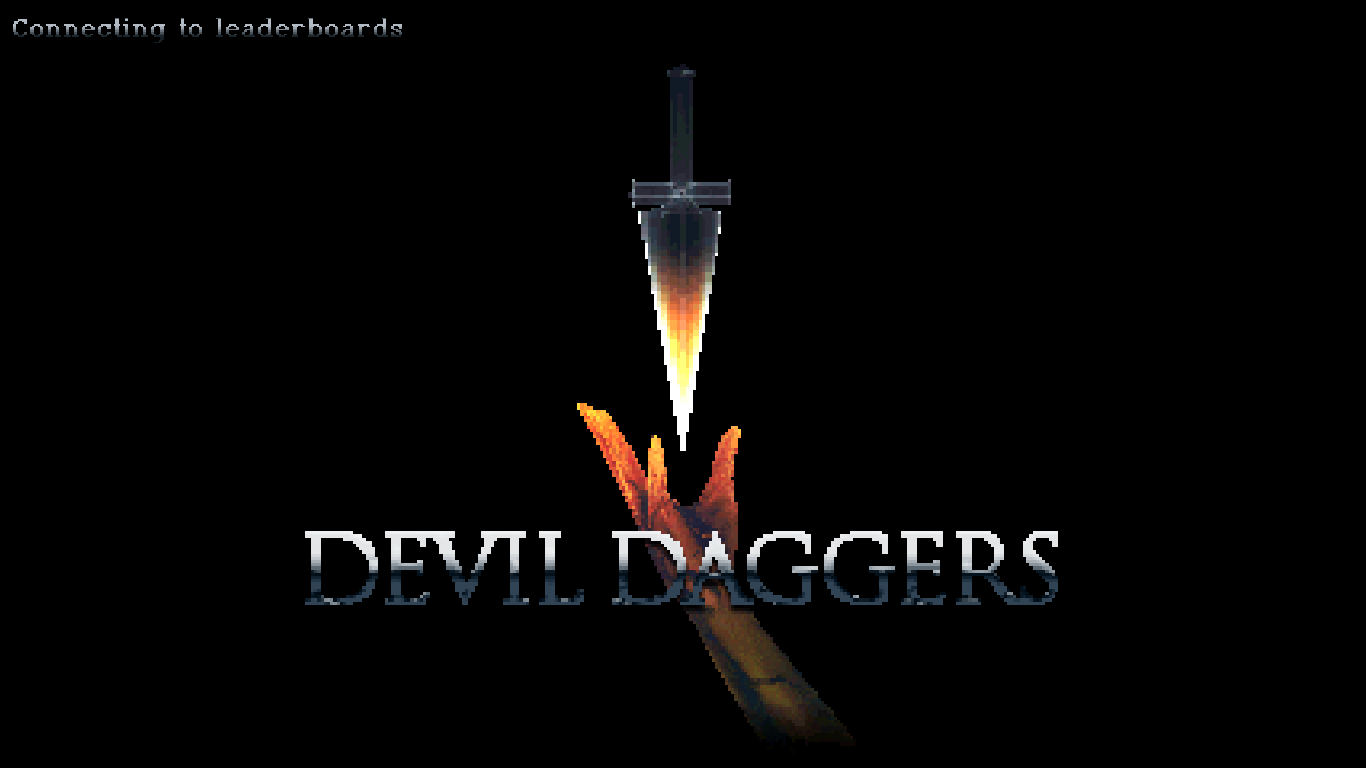
The knife gently spins in the air, hovering less than a millimeter off the floor. The whine of the pulsing demonic energy beckons you forth. You know you're doomed to a fate of death as soon as you walk forth and grip the knife, but you take hold of the blade and accept the hellish challenge that lies before you anyways, because the real game is not truly about avoiding death in it of itself, but about discovering how much of a monster you shall become in the process.
Devil Daggers is an indie First Person Shooter released in 2016. You have to survive an endless onslaught of demons for as long as you can by skill-fully navigating around the crowds of monsters while firing an endless stream of daggers out of your fingers.
You can learn all sorts of new tricks to survive. You can find more efficient ways to kill the different kinds of monsters, you can collect rubies to upgrade your daggers within the span of a game that reset when you die, and you can even watch replays of both your own runs and other people's runs in order to learn more about the monsters and the like. But, no matter how much work you put in, how much practice you get, or how long you navigate around the hordes of hell, every run will always end with your death. You could be impaled by a stray numbskull you forgot about and didn't see coming, or intoxicated by a spider's egg you stepped into, or eviscerated by a centipede you did a bad job of luring into optimal scraping position, or desecrated by a spire you bunny hopped into as you lost control of your mad dash across the arena away from other dangers.
You can't win, you will never win, but you can always improve yourself and even reach a new personal best survival time.
I found this game at a very yet odd time in my life. This march, during the COVID-19 quarantine.
I was wrapping up my studying at home for the week one night, distanced from my friends who also used to be on campus prior to the quarantine that displaced them alongside me in differing directions. The winter here in Indiana half-heartedly continued into march as it does most other years, as I attempted to continue on with my school work in a similar manner. With no campus to roam, no friends to walk over to to visit, no adventure of walking about and exploring the college town over the weekend to look forward to, and only digital text to satiate my needs for interaction and friendship with others, the exciting and engaging life I built over the course of the past 6 months was very suddenly imprisoned from me. I knew things would eventually get back to normal, I knew I could continue studying at home, I knew I could continue to keep in touch with everyone I knew on campus, but I also knew it was nothing compared to the rush of self discovery and adventure that I found within my college experience up to this point. I loved going to class, I loved being able to explore the city and meet new people, I loved finding new things to do after hours, and I hated being stuck away from it all in the wake of viral, political and economic turmoil and chaos, as the news droned on and on about why it was all getting worse and worse, and why my previous way of life was apocalyptic now. Gazing into the abyss was only an inevitability at this point. Perhaps it's not my own gaze, but rather the returning gaze of that void that led me to this game.
I was clicking around on Steam, mucking around online. I was listening to the soundtrack for Dusk on Youtube when I heard this game's name for the last time before buying it. I had heard of it very sparingly prior, but thought nothing of it until recently. It was Andrew Hushult's track for the second to last level of Dusk, simply titled "Nowhere". A commenter had made a comment that the level was like Devil Dagger's level, since Devil Daggers had just the one level. I had vaguely remembered something about this game being very challenging. I poured over a few of the Steam reviews, looked at a few screenshots, remarked that it looked sort of like Quake, and decided to fork over my $5.
I remember my first run both barely and vividly. I grabbed the then-darkened dagger, and I stepped out into the arena to face my first spire, alongside my first crowd of skulls.
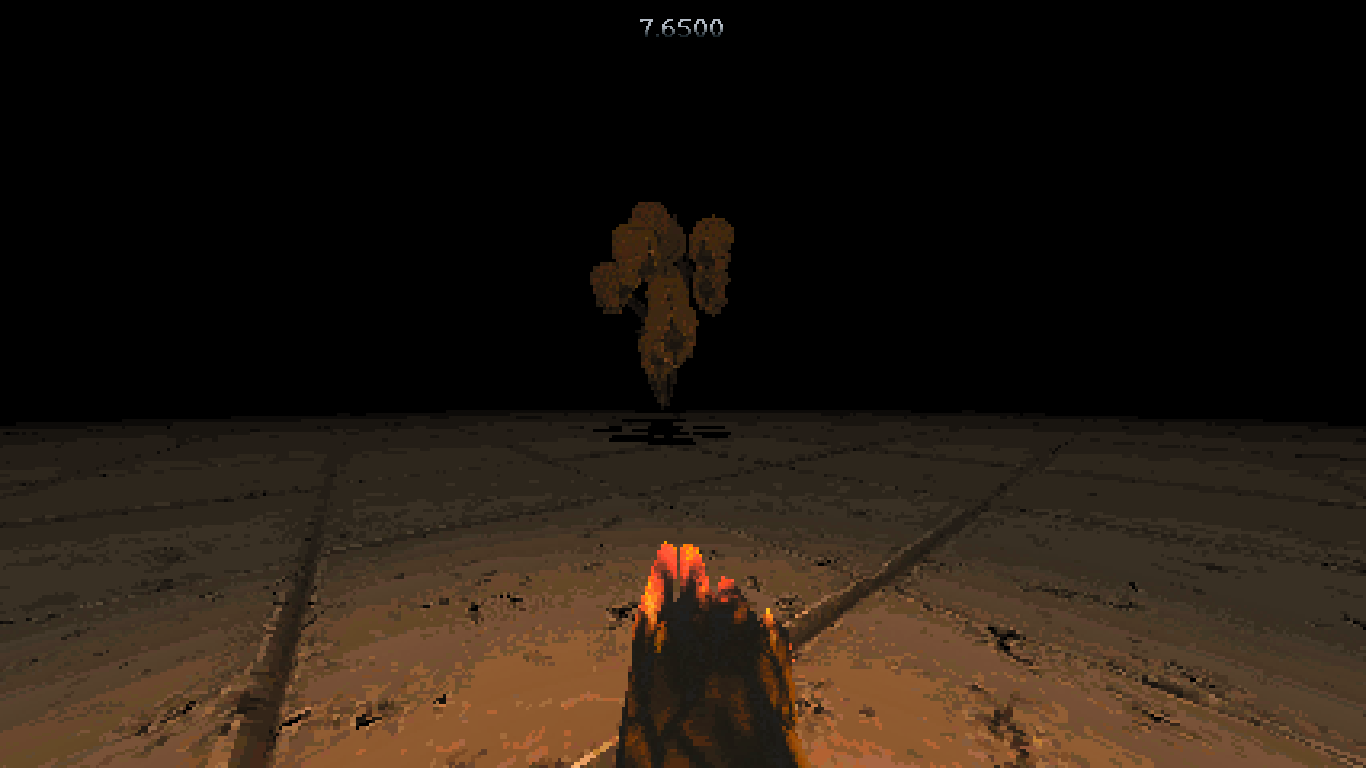
I mucked around, led them around a little, tried to figure out their behavior, and eventually plunged off the edge of the arena as I discovered the hard way that air control was generous, but not always quite as much as other games.
Of course, I was more careful next time, so I decided to actually try fighting, and I managed to make a mess of the crowd from earlier by firing my daggers at them. Starting out, you only get two fire modes; holding down left click for a continuous stream of daggers, or left clicking briefly for a shotgun blast. They're both simple, but effective, and there's nothing more satisfying than cutting down a horde of them with a good machine gun blast of blades skating through the air.
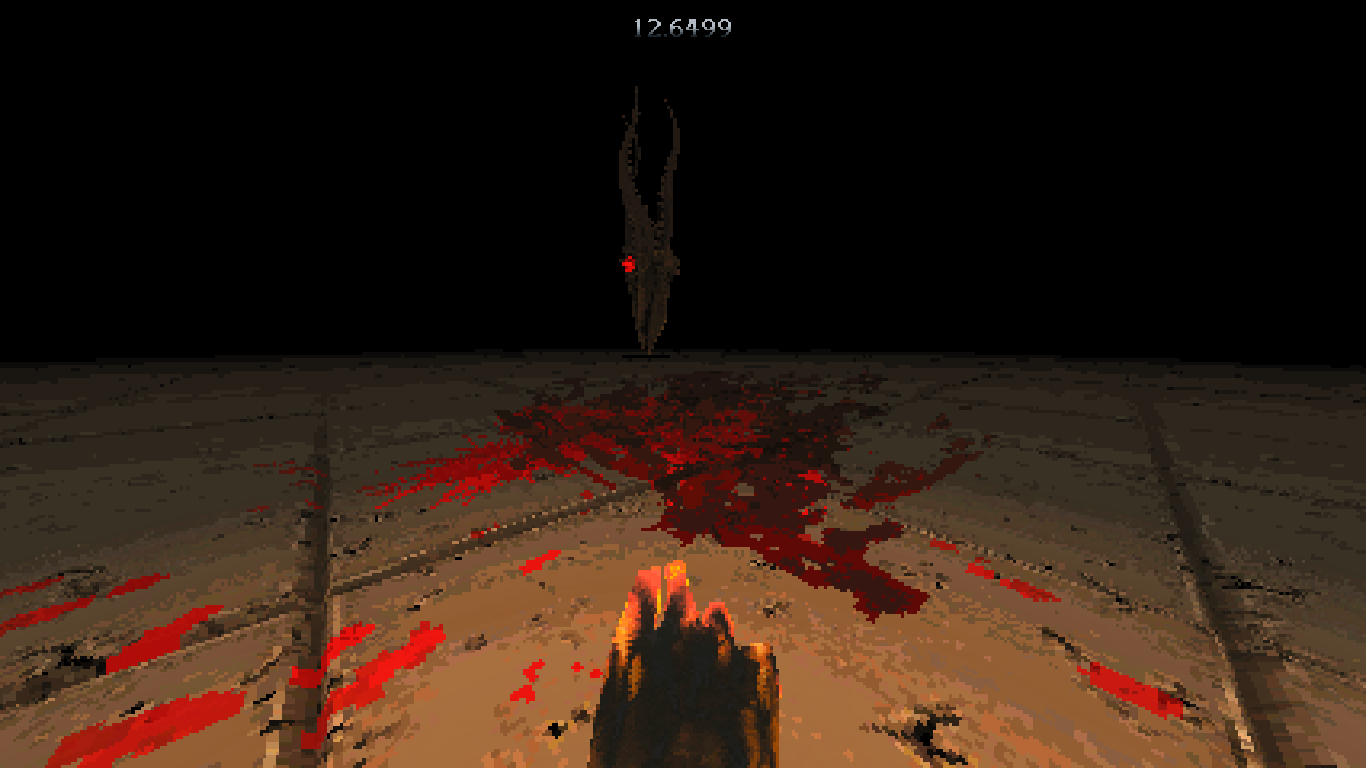
Of course, three more swarms came after me from the shadows, and I failed to outmaneuver and outshoot them. Focusing too much attention on one, I backed up into another.
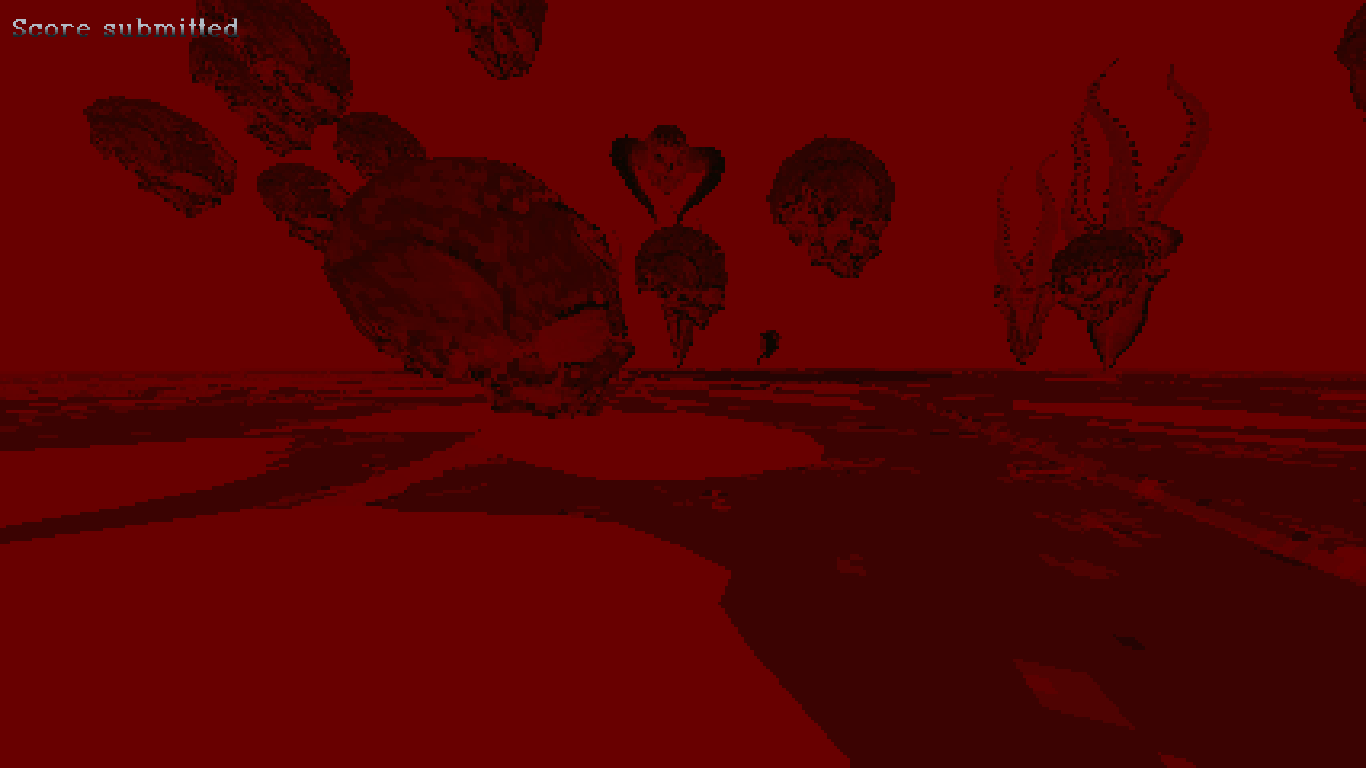
As I made it a little further and further with each run, I found a familiar pattern and groove. I would discover more and more of the spawn order, more and more enemies would be piled onto the arena, and I would become increasingly overwhelmed by the chaos borne out of the contrast between the pursuing horde of skulls, the wandering of numbskulls, the droning of spires towards the arena's center, and the siphoning of all-important gems by the spiders who lurked into the dark, with the intention of corrupting their demonic power into miniature spider eggs.
Oh, the gems. I forgot to talk about the gems.
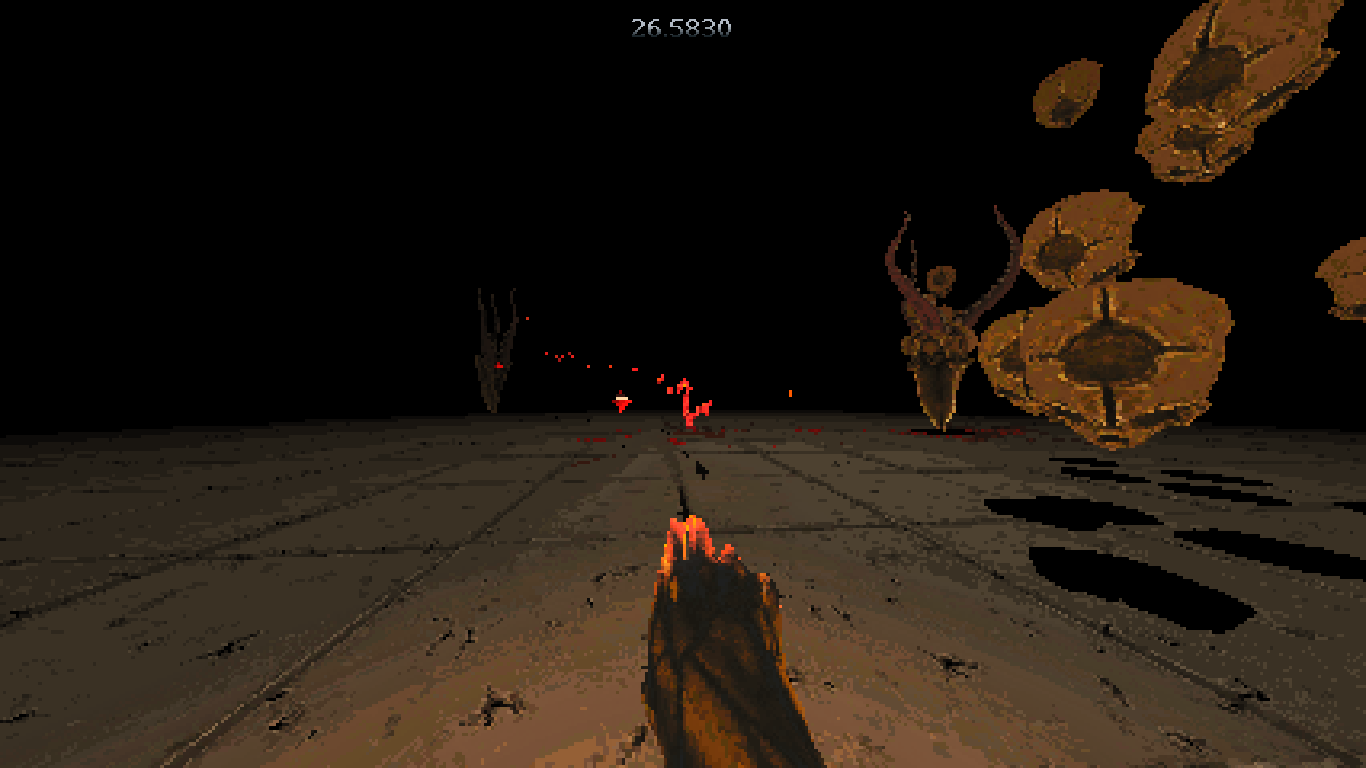
The gems are the litter of the horned skulls, as well as the spires and various other major enemies. Collecting them allows you to fire more daggers and gain more abilities as the game goes on. The most accessible of these upgrades is the one for when you collect 10 gems. If you can survive 40 seconds or so, you'll get it, the game will slow down for a brief moment, and you'll suddenly be firing twice the number of daggers compared to before with each attack. The caveat, however, is that gems will hover towards you unless you're firing, and will be pushed away if you fire a shotgun blast. So, you have to strike a balance between shooting demons and collecting the gems that you need to become more powerful, all while death remains one little hit away.
I hop into the arena, I shoot demons, I pick up more gems, my power grows, more and more demons come after me, I have to keep running and shooting and dodging until it's too much and I get hit. The difficulty of this game increases exponentially over time, and because the spawn pattern is the same each time, it's all up to you to master the spawn patterns and the hordes in order to reign in the chaos on your own. There's always more you can do. You can memorize and anticipate the pattern better, you can practice your bunnyhopping and shotgun fast fire technique to give you that edge, you can leave the spires alive so you can spawn more skulls to collect more gems faster, a technique known as farming, and you can even find more efficient ways to kill the most dangerous enemies in the game. You can watch replays of players who are better than you in order to learn their techniques and study their ways, you can slow down or speed up these replays, or you can switch to a top down view to become more aware of their surroundings, and you can even watch your own replays to study what went right and what went wrong.
Slowly I learned to move around the hordes of skulls and spires without taking a hit. Slowly I progressed further and further, learning more and more about the monsters I had to face over time. Slowly I learned more and more efficient ways of dispatching the creatures with my aim and positioning. Slowly, it was less about avoiding the monsters and more about manipulating them into optimal positioning to be dispatched. Despite all that was thrown at me, despite the ever increasing entropy of differing monster types and threats, I could focus largely on myself, my positioning and movement, and my shots at the monsters in order to continuously outplay the hordes of hell. I wasn't always successful, as every run ended in my death, but I could practice, and focus, and keep my head up even in the face of looming failure, and I could survive just a bit longer than last time. Now, the threats that phased me earlier are little more than a warmup, and the upgrades that were previously unobtainable to me have entered my grasp for me to wield more times than I can count now. Where I used to struggle to make it 30 seconds, I have now survived 330 seconds total as my personal best.
You don't have to take my word for it, either. Here I am on the leaderboard.
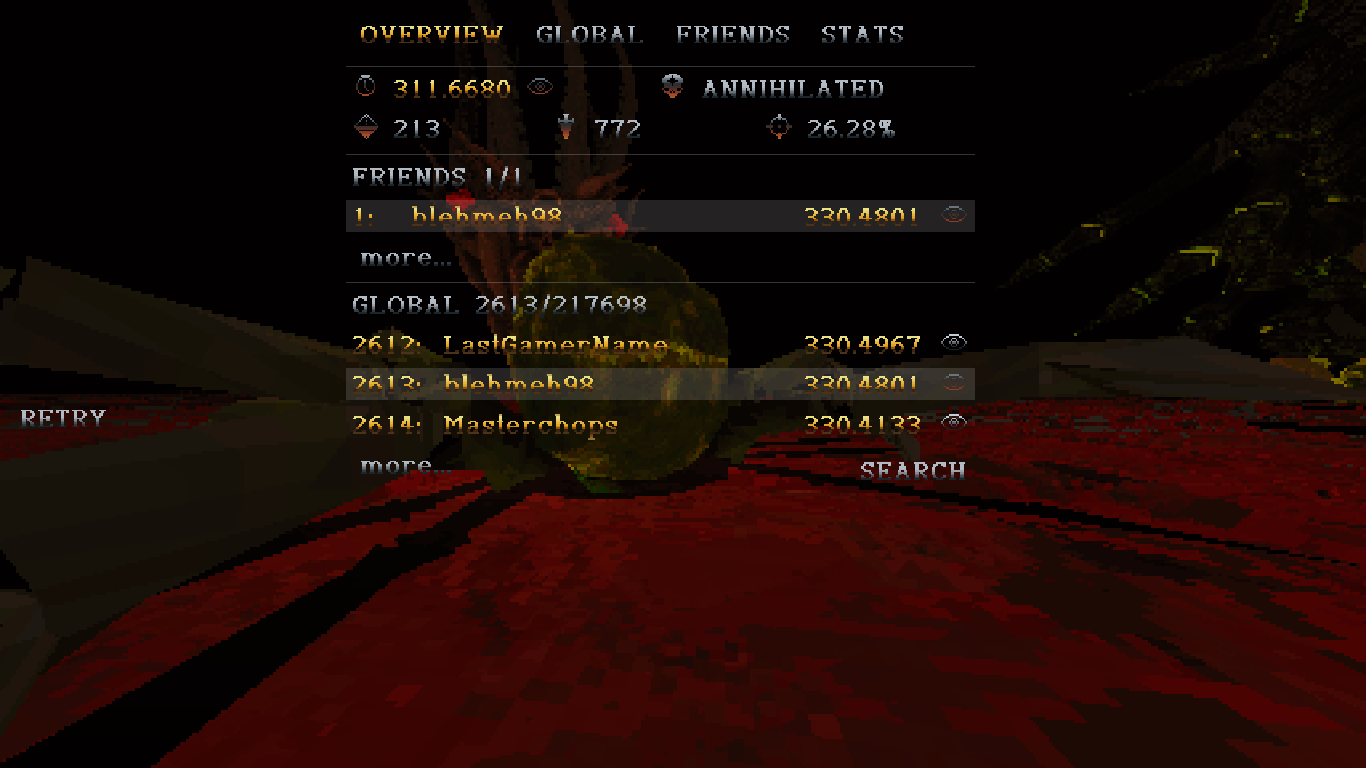
Ahh, the leaderboard. In a realm of chaos, despair, and relentless hordes, the leaderboard is simultaneously a proving grounds of skill and coparison between yourself and other players, and a refuge from the resurrecting and then dying to try to prove yourself again. It's where I get knocked back to after a failure, where I linger after an exhilarating set of runs, where I take pride in my accomplishments, where I go to reflect on my runs and skills, where I compare myself to others with similar capabilities to I, where I marvel at the best players on earth, and where I work up a goal and the courage to try to make it. It's a wonderful place, full of fun times and rankings.
You can see global ranks, individual stats of both yourself and other players, and all sorts of other neat stuff. Here's a few pictures.


In a game of chaos, the leaderboard was what I needed to push myself further, to keep my head up and learn more about the various dangerous monsters, to master the game's techniques and to make it further than before. In a way, my relationship with the leaderboard compared to the game was my relationship with the game compared to the world events around me. In a world of chaos, it was this game that helped me unwind, that helped me focus on myself for a little bit, that gave me a little distraction from a world going mad. It helped me reinforce and understand that I can always overcome whatever is thrown my way as long as I never stop learning, I never lose the resolve to overcome new challenges, and I always retain a laser focus on only that which is within my control. Because it's ultimately not about how far I get, but the journey it takes to get there. Not the just run, but all the ones before it too.
In a world of chaos, this game was just what I needed, a reminder of how far practice and dedication can take you, even in an arena of ever increasing entropy of threats and problems.
Now, I'll sum up why I think you'll like it, too.
Moving around is straightforward enough, and feels great to do in this game. However, the movement system has lots of little edges for you to master. Movement isn't normalized, which means that running diagonally accelerates and moves you faster than running straight forward. You can bunnyhop for increased speed if you time your jumps right, well timed jumps being confirmed to you by the game with a bouncy audio cue and a temporary FOV increase. You can fire a shotgun blast at the ground and jump simultaneously to do a "dagger jump", similar to a rocket jump. If you time a second shotgun blast downwards just right, you can do a second dagger jump in mid air. This can allow you to sail over crowds of monsters safely. You can always practice these movement tricks more, too.
The textures are chunky and crunchy, the blood and gore from felled monsters fizzle through the air before settling down on the floor, the light from your hand flickers and illuminates your surroundings, the monsters jitter and jolt about as they sail through the arena. I just can't overstate how awesome this game manages to look while imitating dated technology.
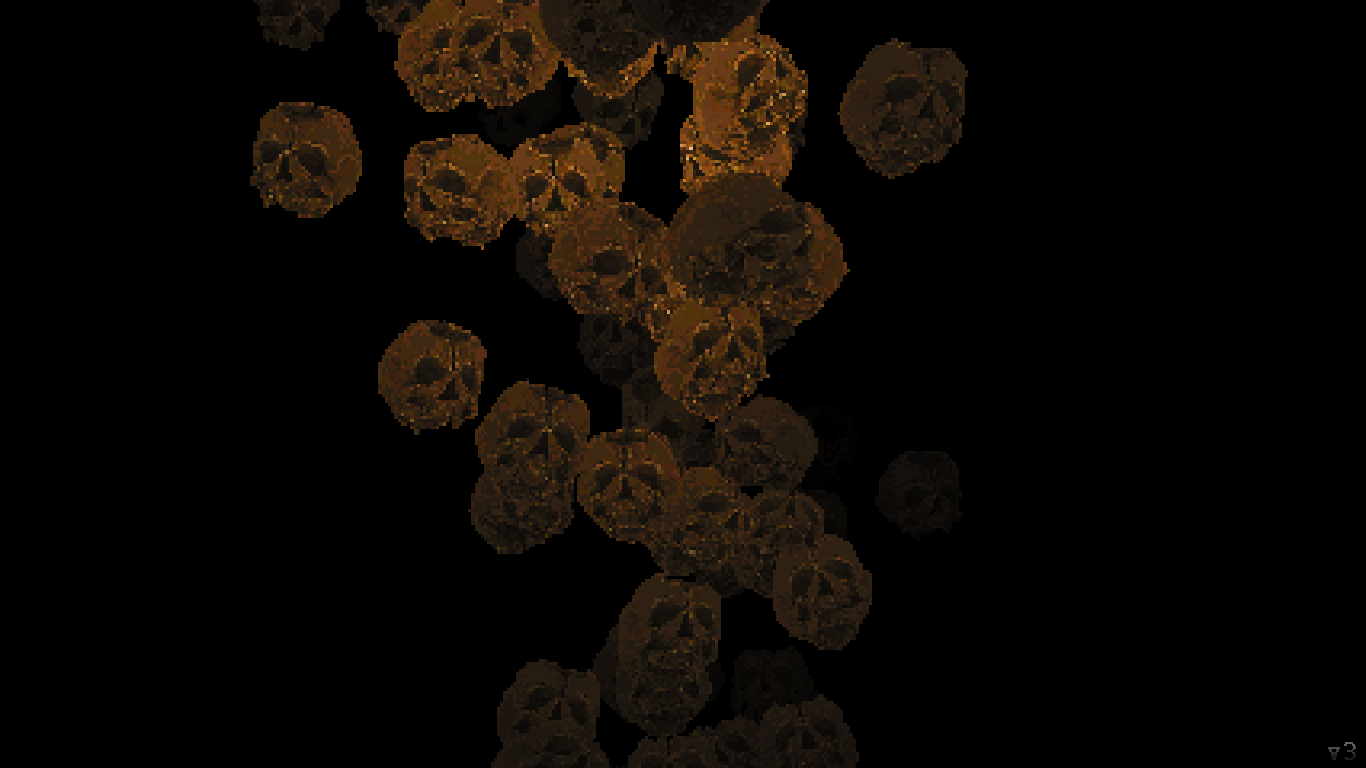
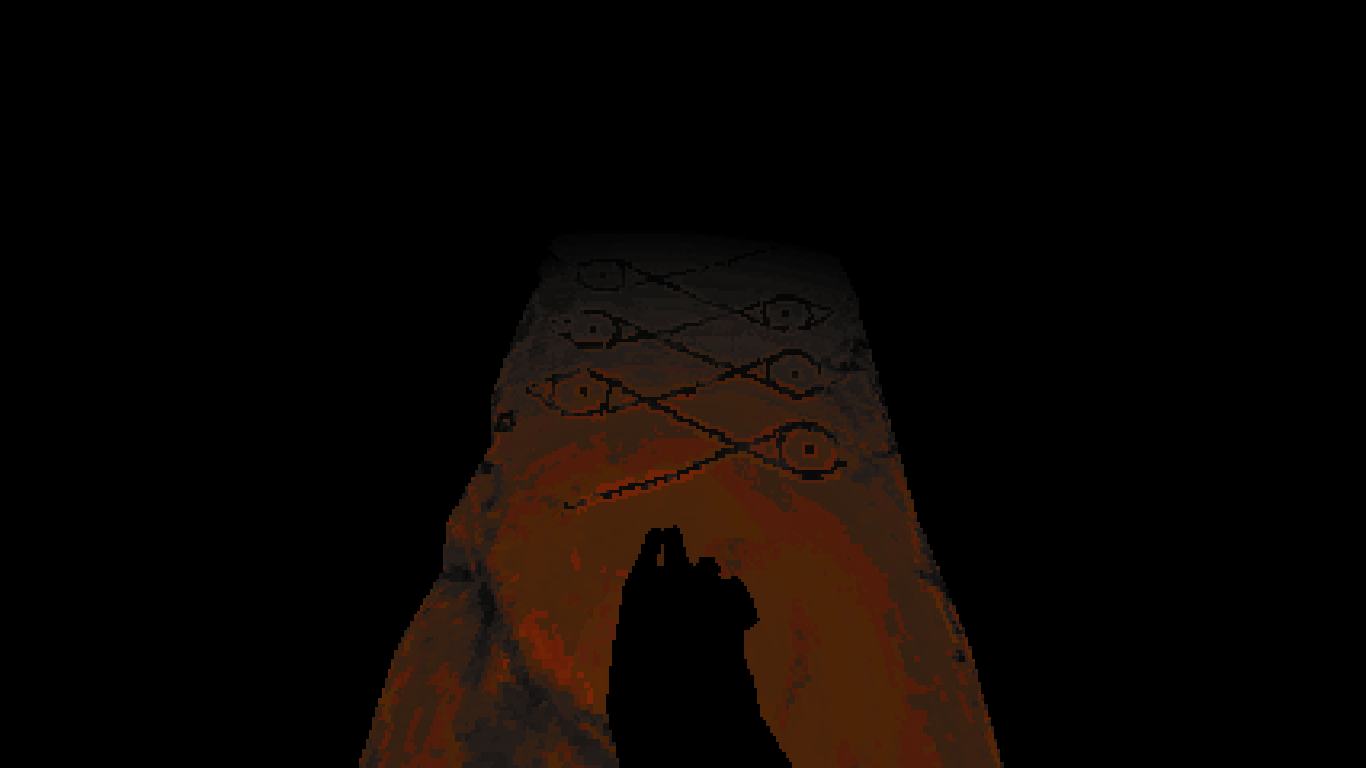
The ambience of the arena as you step in, each direction humming a different pitch from the others. The monolithic droning of each squid-like spire as it churns together more and more demon skulls until it lets them all out in one big spurt. The jittering, clicking noises of small skulls as they swarm you, the hovering hum of numbskulls as they lazily drone about the arena to catch you off guard, and the gleeful giggling laughter of the ringed horned skulls as they lead the crowds of small skulls in pursuing you, advancing on your position faster than you can bunnyhop away. The clicking and hissing of the spiders, scream of the centipedes, and breaths of the omnious leviathan. The audio is designed well, each monster is distinct in sound, and you can hear them coming and pinpoint their location even if you can't see them.
It's not just the monsters, too. The gems make their own ambient hum to signify their presence, and you hear the confirmation that they have been successfully collected. As your daggers get more powerful, so do the sounds. First you only hear the daggers flying, but as you fire more of them, you begin to hear them scream out as you fire more and more of them, whining out as you dish them to the unholy. The noises each monster makes when hurt, killed, and more and just too good to explain with words. You really have to hear it all with a pair of headphones to truly believe it.
While there is no music that plays during the arena aside from that born out of a carcophony of bones pierced with blades and gems harvested and big monsters felled, the game does have a soundtrack of four tracks. One plays in the intro screen, one plays in the main menu, and the other two play in secret areas hidden in the lobby where you pick up the dagger. All of the tracks are pretty phenomenal for the role they fill in the game, and I enjoy listening to them even outside of the game.
There's no story or cinematics explaining why you're here, just you, the arena, and the monsters. In a way, the story tells itself through gameplay. As you grow more powerful, you also grow more mad as more demons chase you, you get more nervous and unstable, and you eventually slip up and succumb to the hordes. It's a motif of each run of how the pursuit of power inevitably leads to chaos and self destruction in the face of it.
Games are really quick. You won't last longer than a minute starting out, and even as you get good, playtime for a single run will only take a few minutes at most until you fall. Even the best players on earth haven't yet lasted more than 20 minutes, making this the perfect lunch break game if that's what you're into. I personally like to just hop in and grind for an hour or two, but you can totally play only a few self contained runs if that's all you have the time or patience for.
This game is a little bit more of a mixed bag in that regard than something like Doom. The main barrier is that it relies on OpenGL 3 technology, which some older graphics cards don't support. If your computer comes with a graphics card that doesn't support OpenGL 3, you're out of luck when it comes to running this game. This might be the case if your computer was made before 2010. On the other hand, if your computer does support it at all, then this game will run very well. I can get plenty more than 60 frames per second running this on my Thinkpad X230 from 2012. It has a Core i5 from that era and integrated Intel graphics, but it supports OpenGL 3 and this game runs very smoothly on it with no hicups. I've also run this game on a Mac Pro from 2008 that has a graphics card from the era that wasn't super powerful then and really isn't now, but it supports OpenGL 3 and it runs Devil Daggers very, very, very well.
So, my conclusion with this game is that either your potato won't run Devil Daggers at all, or it'll run it very well, with no in between, since the largest barrier by far is the newer graphics technology used to develop the game.
Thanks for reading! I hope you enjoyed my review!